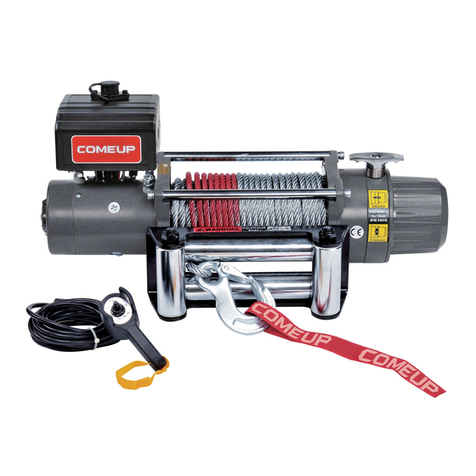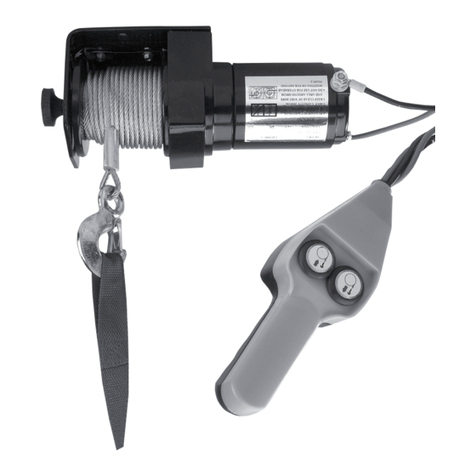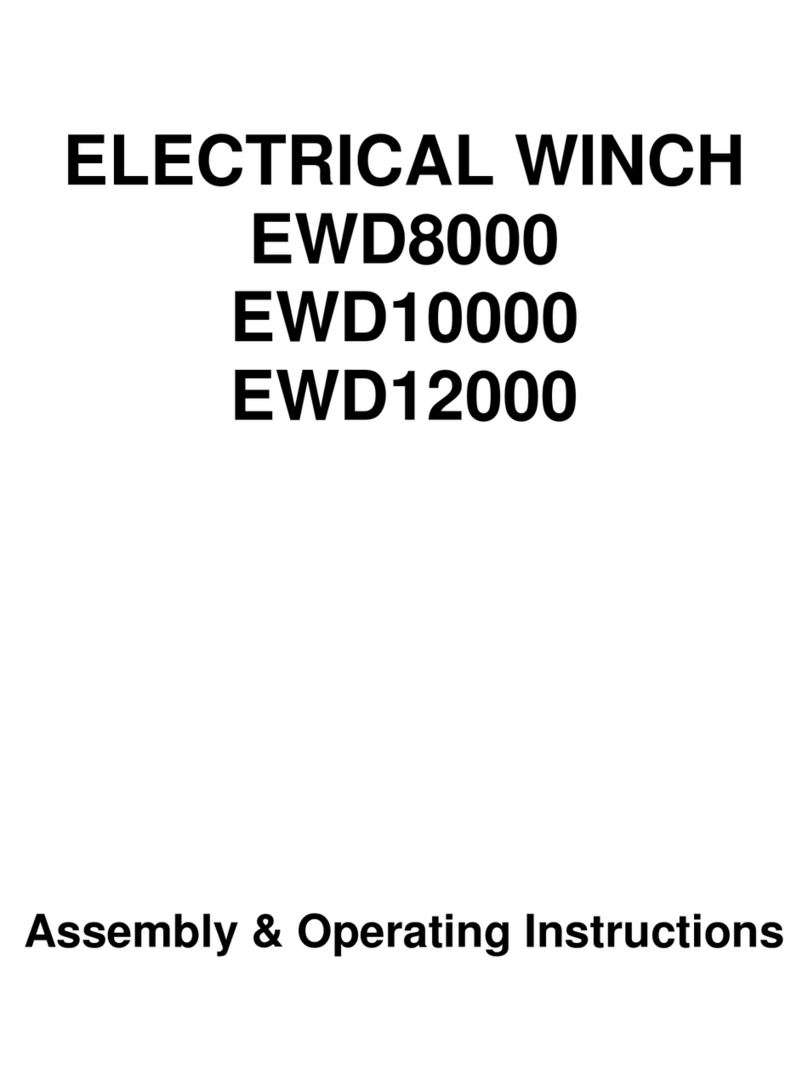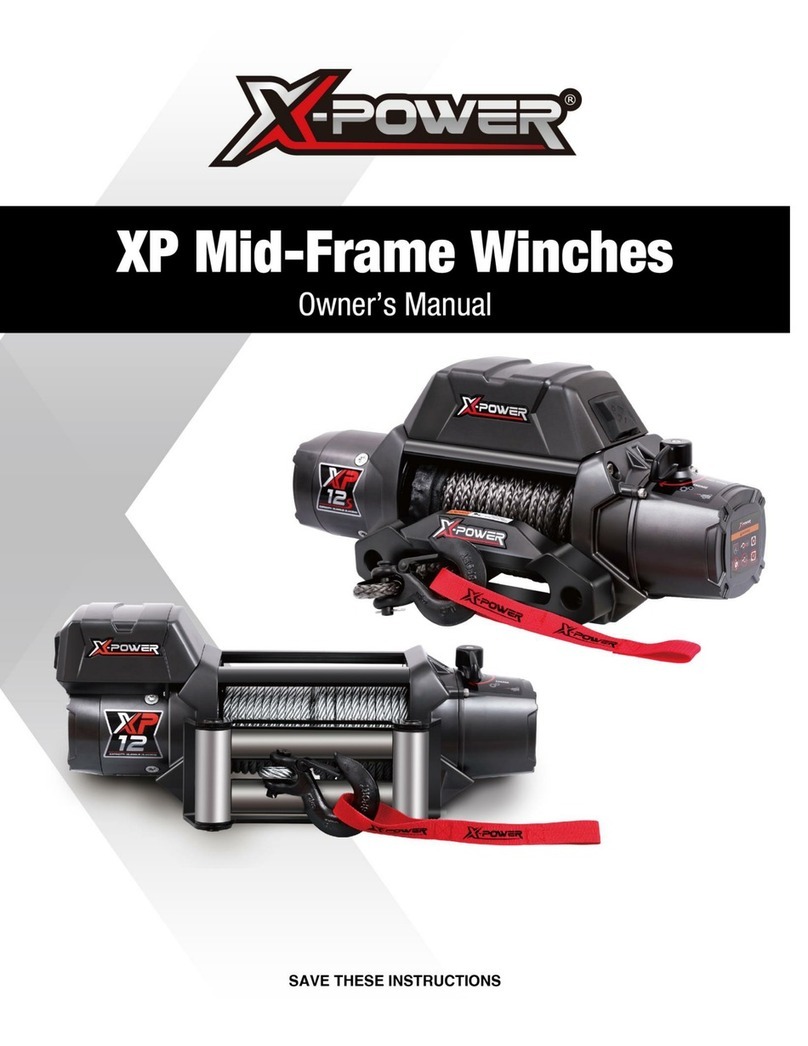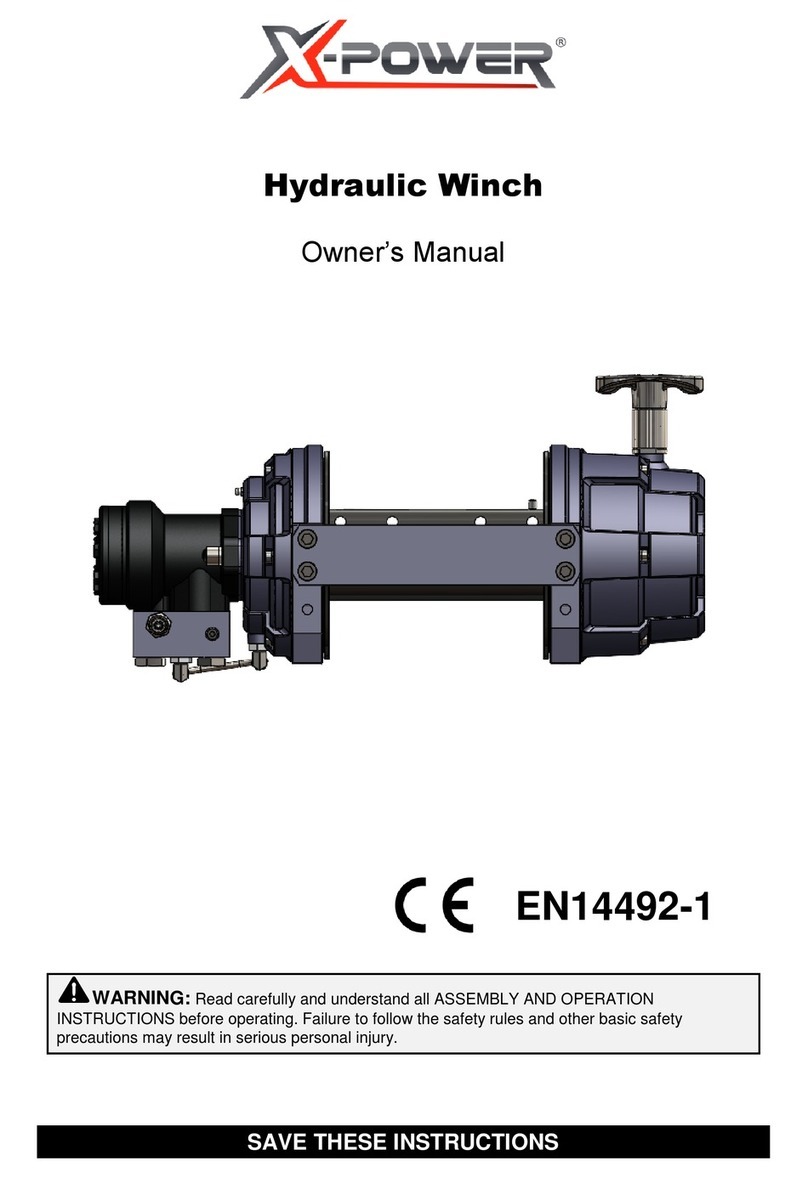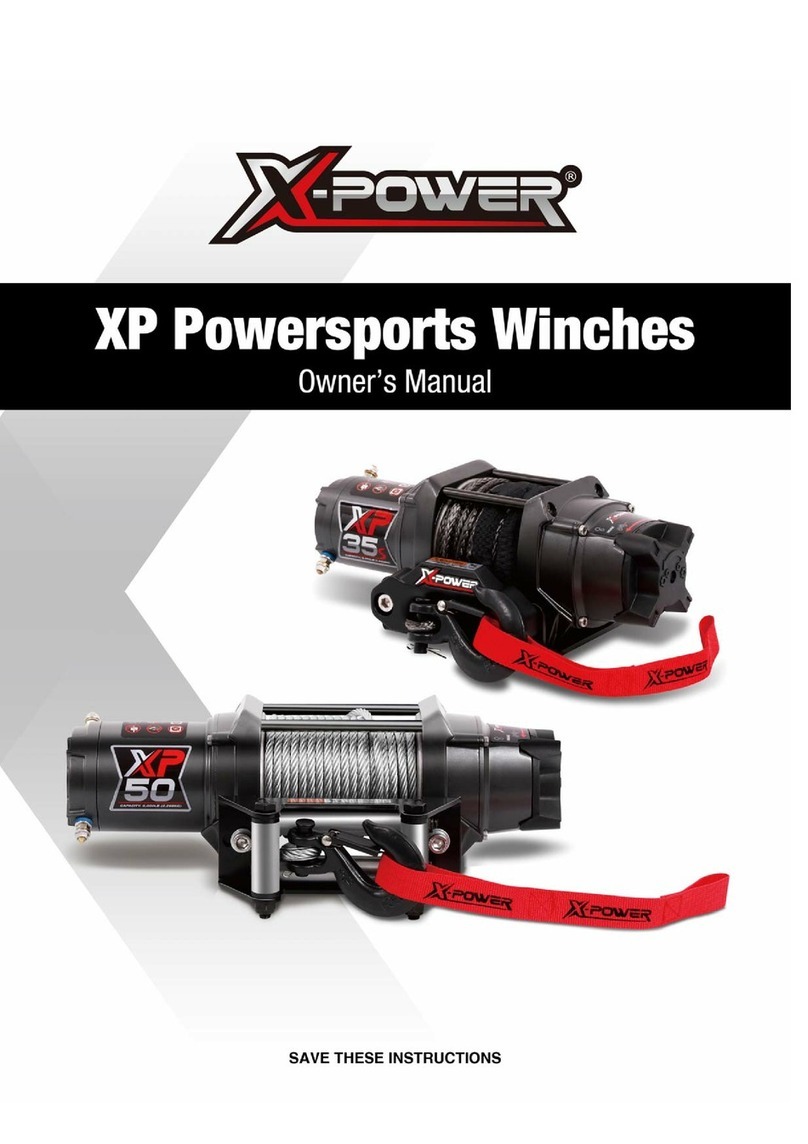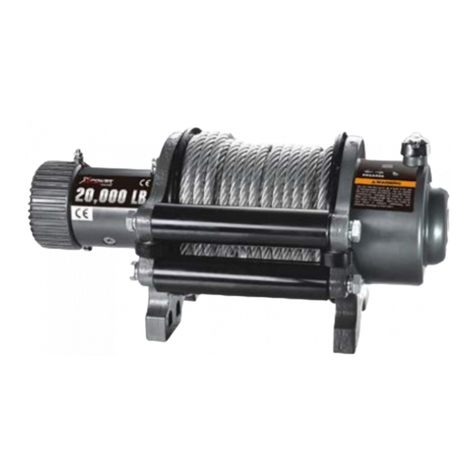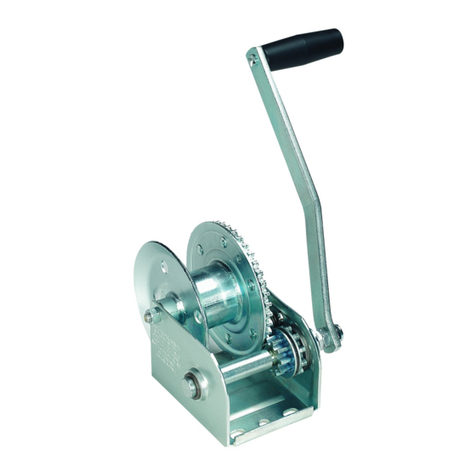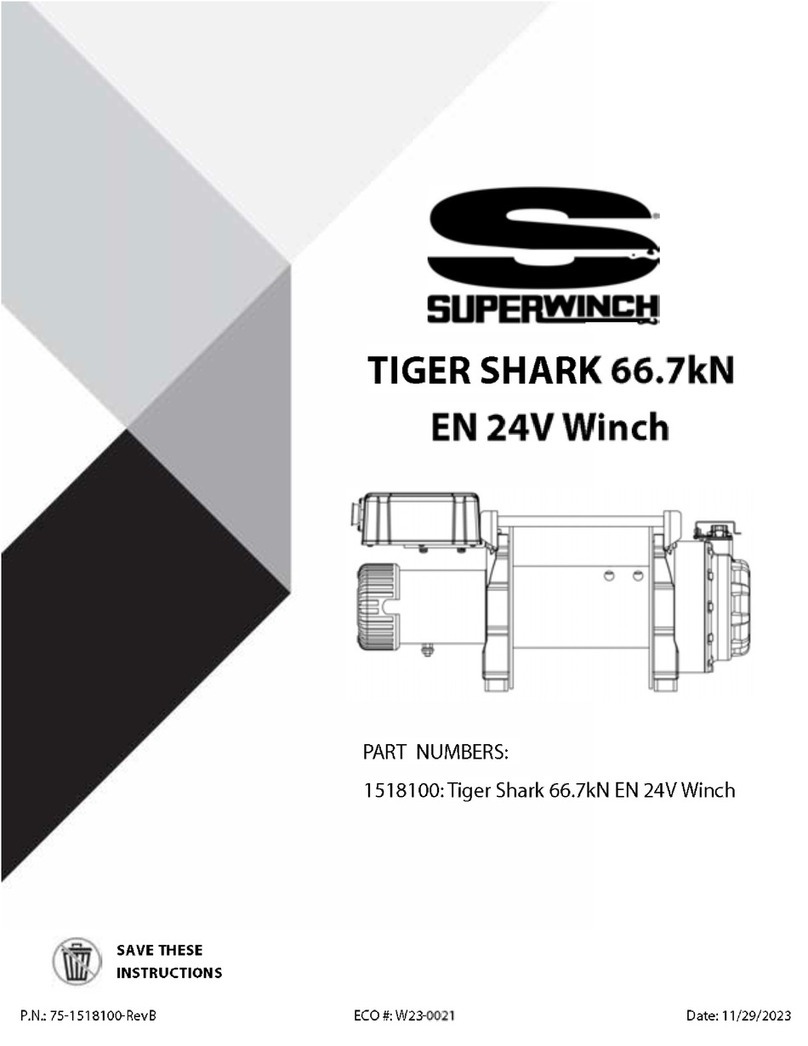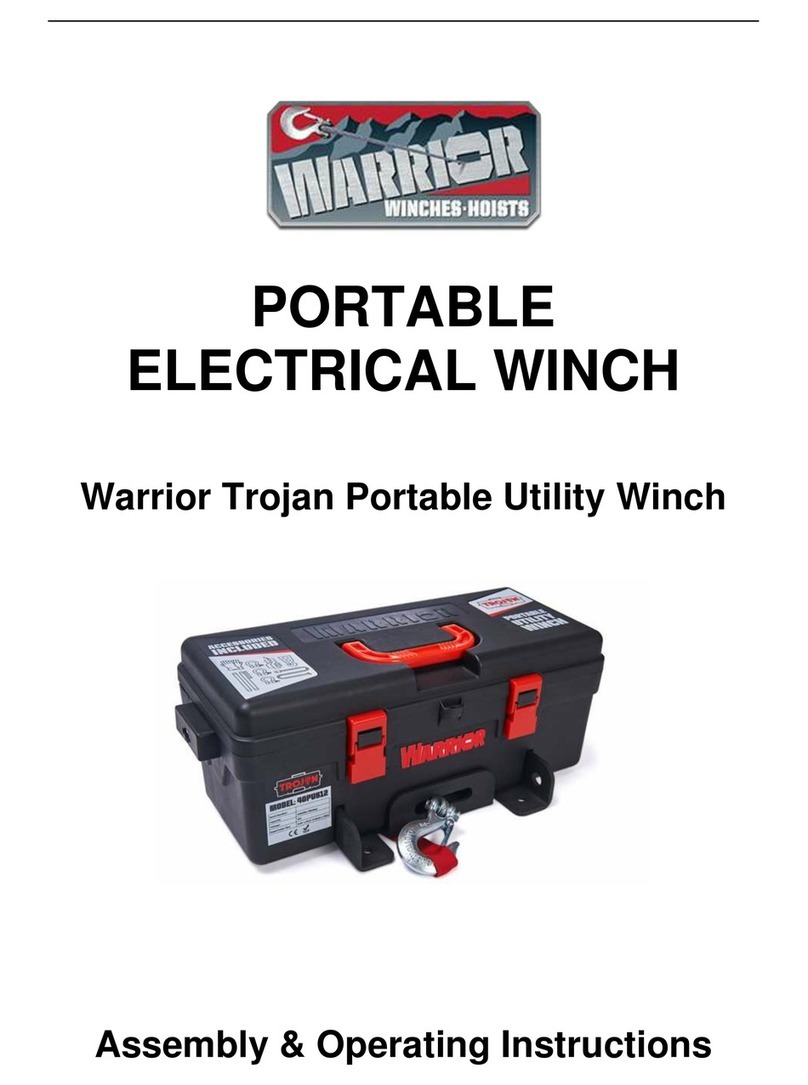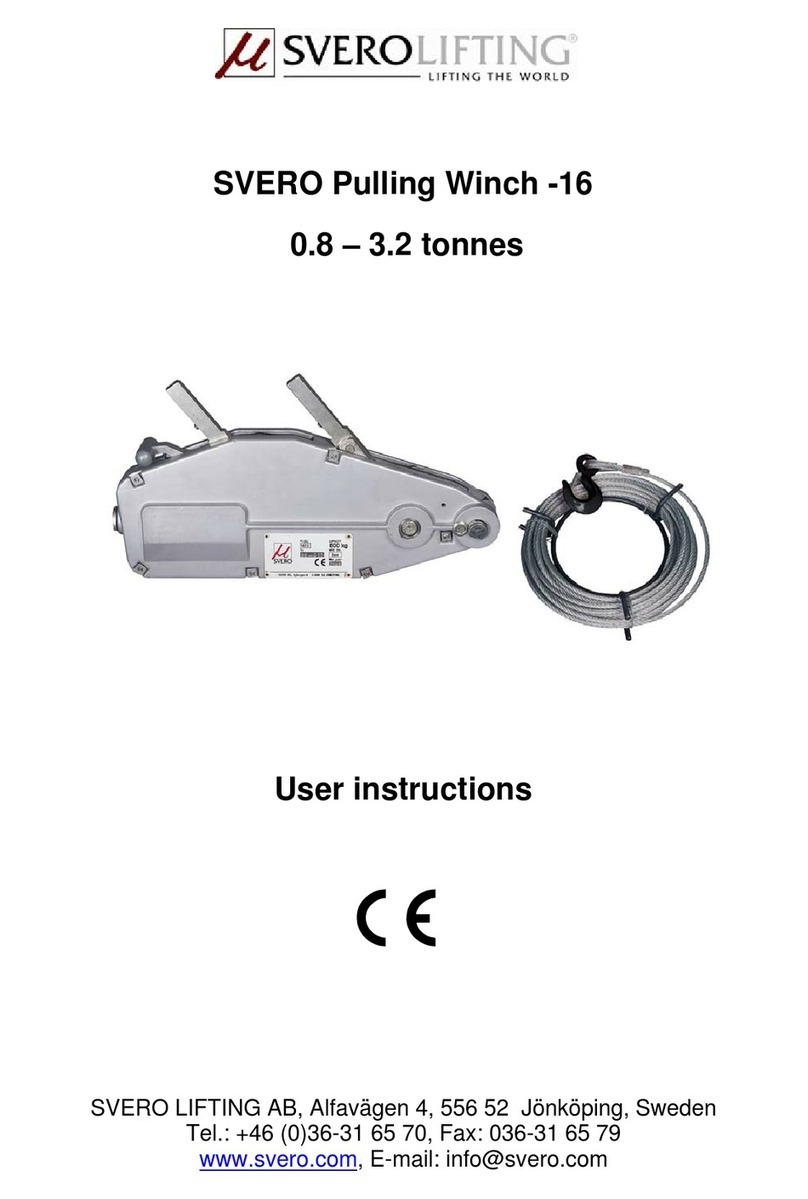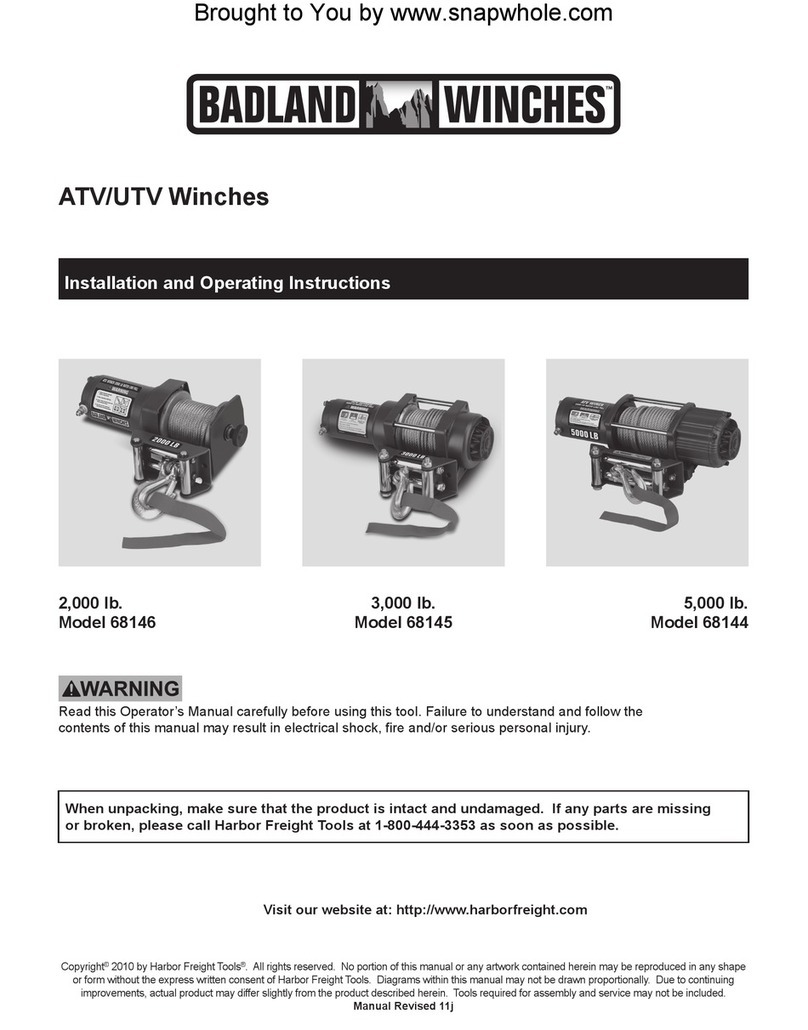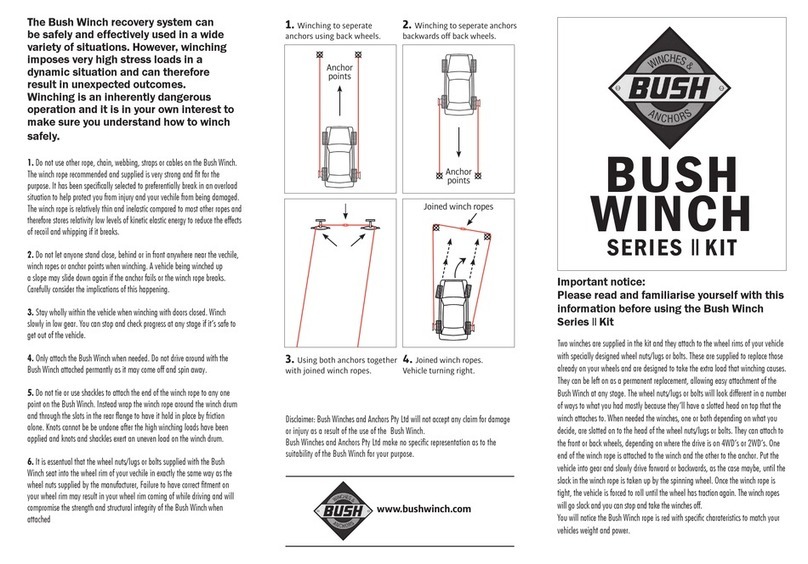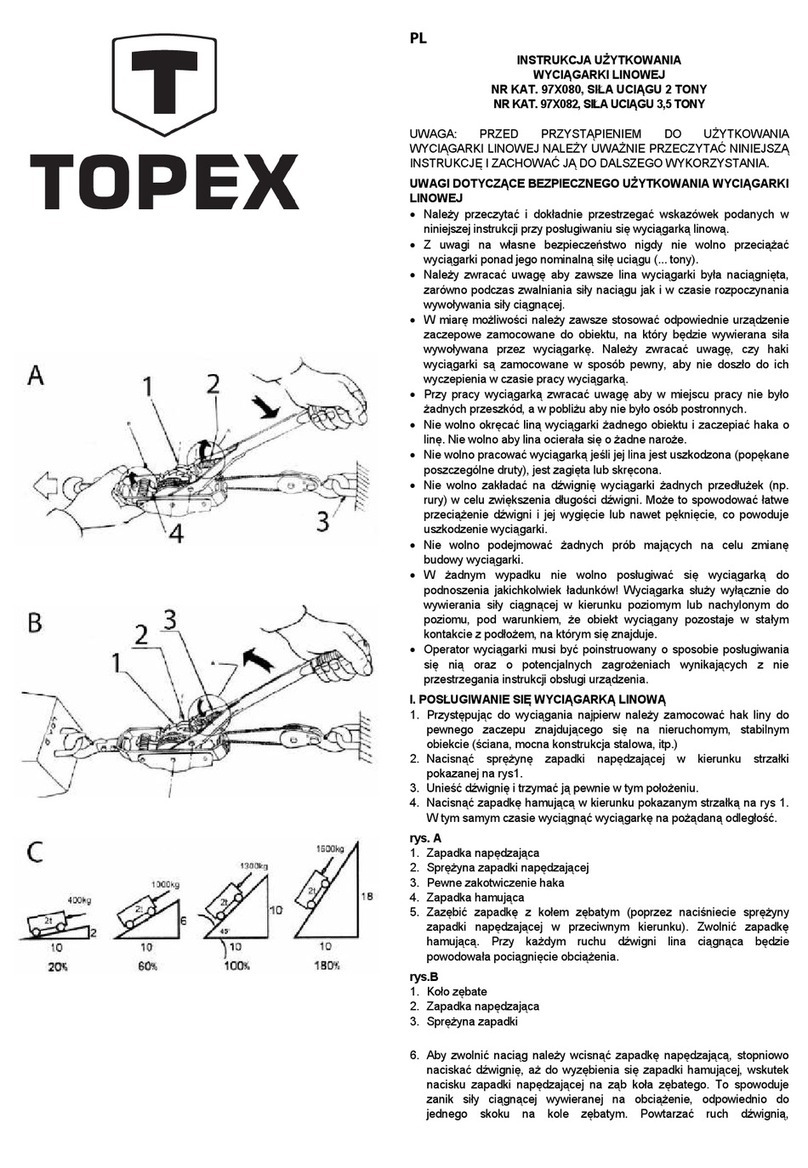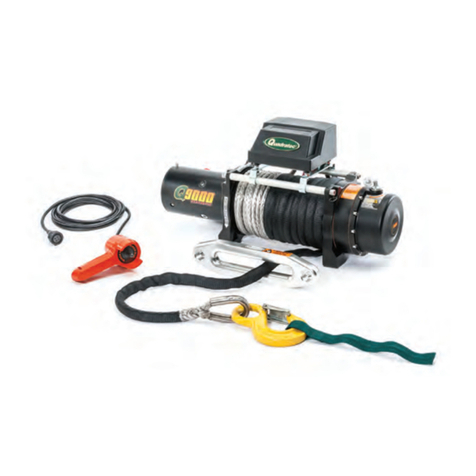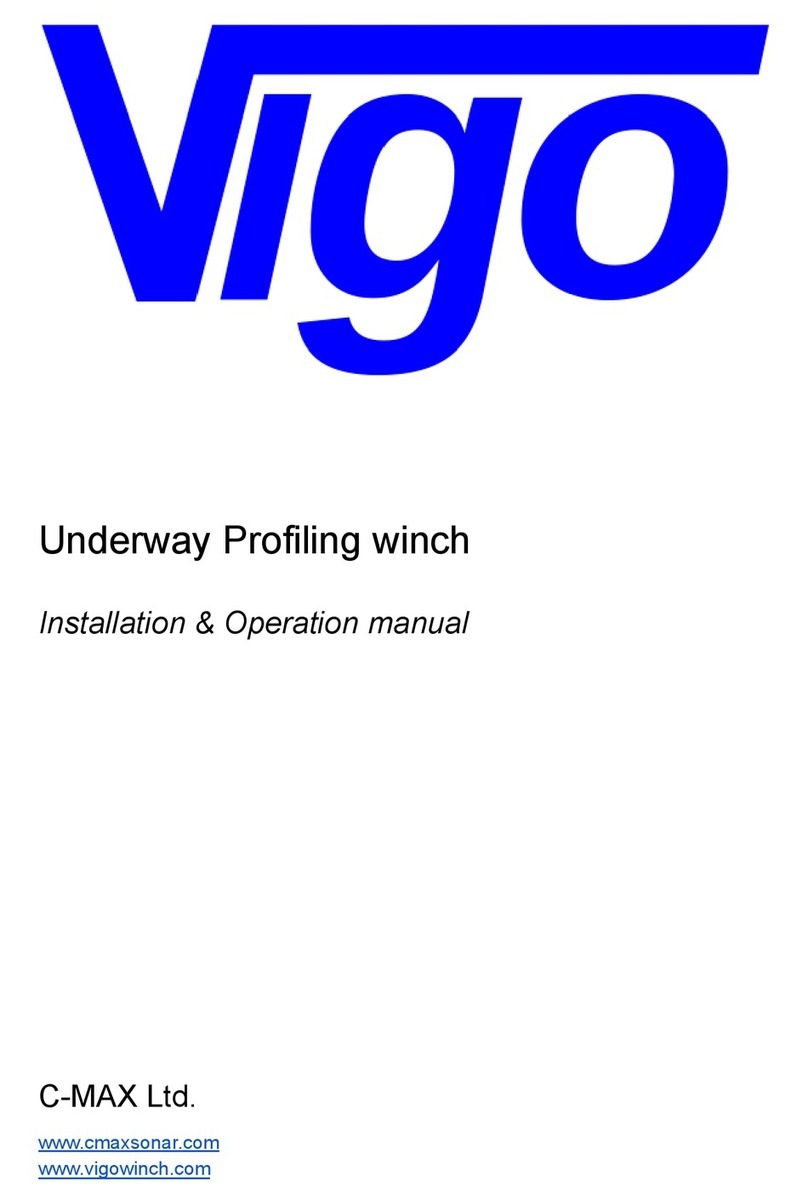Page 9 of 19
To prevent serious injury from leaking battery acid, do not use a dirty, corroded, or leaking battery.
Only use a 12V automotive (or equivalent) battery that is in good condition.
1.
Plan a route for the wiring from the planned winch location to the battery. This route
must be
secured and
out of the way of moving parts, road debris, or any location
where parts may be damaged. For
example
, you may wish to route the wires under
the
vehicle
, attaching it to the frame using suitable
fasteners.
Do not attach the
wires to the exhaust
system, drive shaft, emergency brake cable, fuel line, or
any
other components which may create damage
to the
wiring.
2. If you drill through the bumper or any part of the body to route the wires, be sure to
install a rubber grommet in the hole to prevent fraying the wires.
3. Route the Cables from the Solenoid to the
battery
and from the Solenoid to the
winch,
following the
precautions discussed. See image below:
4. Attach the red, black and yellow cables to their corresponding terminals on the winch.
Note: Be sure to connect the small Black wire from Control Pack to Black (-) terminal on motor
same terminal as Negative (-) battery cable.
5. Attach the red battery cable to the positive terminal of the battery.
6. Attach the black battery cable directly to the negative terminal of the battery.
7. Lift the socket cover exposing the electrical switch connector. Insert the pendant
connector into the socket.
NOTE: The attachment of the Motor Cables determines the operation
of the Remote button. After the unit is mounted and powered, check
the direction of the Power In and Power Out on the Remote button. If
you wish to change the direction on the Remote, disconnect the
Battery Cables from the battery, switch the Motor Cable connections
on the Motor Assembly, then reconnect the Battery Cables.
8. Disconnect the pendant controller when not in use.
Preparing & Stretching Winch Rope:
WARNING: Always pre-stretch all new ropes before first use. Failing to pre-stretch rope will
reduce maximum capacity of rope and may cause premature failure.
1. Positing vehicle on a flat surface approximately full rope length distance from anchor point such
as large tree.
2. Connect rope to anchor point with minimum number of wraps on drum.
3. Recoil the rope back into the winch under at least 1000lb (454kg) of tension. Apply light pressure
to vehicle brake pedal as needed to produce load.
4. Stop approximately every minute to check rope is winding level. Make sure vehicle is in park with
parking brake applied before exiting vehicle. Do not check, touch or attempt to reposition rope
with load on winch rope.
Remote introduction:
